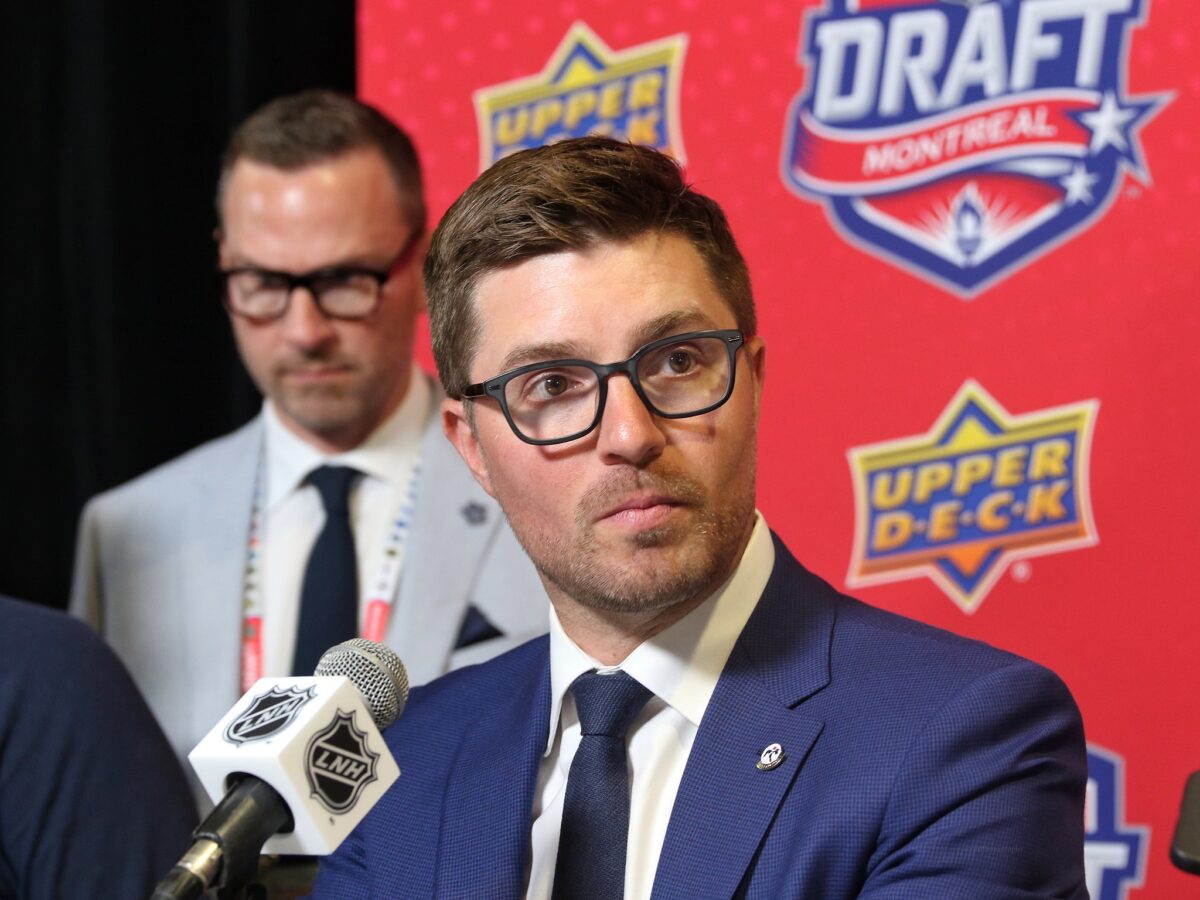When the pandemic struck the NHL, we knew that there would be lasting ramifications felt by everyone. But now in looking back, no team has felt those ramifications more from a flat cap standpoint than the Toronto Maple Leafs.
What was once thought to be a good plan fell on hard times. While the Maple Leafs’ plan could still work eventually, we now have a partial explanation as to why things haven’t worked out yet. There are the things the Maple Leafs could control. But then there are the things out of their control. When both go south at the same time, it leads to disaster.
Ugly Flat Cap
Every NHL team is impacted by the flat cap. When the pandemic happened, everyone took a financial hit. This led to the having to go with a flat cap since the end of the 2019-20 season.
It’s important to understand just how impactful the flat cap has been. While this has impacted everyone to varying degrees, it’s fair to say it has impacted the Maple Leafs the most. While they couldn’t control the conditions of the world, they still made a decision on several contracts in short order.
Let’s take a look at when the Maple Leafs’ core four signed and then let’s look at the cap hit and percentage at the time of signing. You’ll see management made a basic assumption when signing these deals.
- Auston Matthews: Signed five-year deal on Feb 5, 2019. The AAV was adjusted to $11,640,250. At the time, this accounted for 14.64% of the $79,500,000 upper limit.
- John Tavares: Signed seven-year deal on July 1, 2018. The AAV was $11,000,000. At the time, this accounted for 13.84% of the $79,500,000 upper-limit.
- Mitch Marner: Signed six-year deal on Sept 13, 2019. The AAV was adjusted to $10,903,000. At the time, this accounted for 13.38% of the $79,500,000 upper limit.
- William Nylander: Signed six-year deal on Dec 1, 2018. The AAV after the first season was $6,962,366. At the time, this accounted for 8.76% of the $79,500,000 upper limit.
The Maple Leafs had a unique opportunity to lock in key offensive players for several years. While it was a risky decision, they made these signings with future cap growth in mind.

Except for one thing. Thanks to the pandemic and the flat cap, that growth didn’t happen as expected.
A Brief Cap History
To understand the impact of the flat cap, one just needs to look at the last 10 seasons of cap data. In the 2013-14 season, the salary cap was $64.3 million.
In every season from 2013-14 to 2019-20 (the shortened season), the cap grew. In some seasons when the option of the full escalator was taken, the cap experience significant growth. Look at what the cap figures were over that time.
- 2013-14: $64.3 million.
- 2014-15: $69.0 million.
- 2015-16: $71.4 million.
- 2016-17: $73.0 million.
- 2017-18: $75.0 million.
- 2018-19: $79.5 million.
- 2019-20: $81.5 million.
- 2020-21: $81.5 million.
- 2021-22: $81.5 million.
- 2022-23: $82.5 million.
We are finally starting to see some signs of normalcy. For the first time in three seasons, there will be an increase in the cap. As we continue to return to normal and revenues start to catch up, we’ll start seeing cap numbers increase at a more rapid rate.
Back to the Maple Leafs
So back to the Maple Leafs now. Look at the dates that the core four signed on. All four happened between July 2018-Sept 2019. That’s just 14 months. The pandemic stopped the NHL season in March 2020 or just six months after Marner’s contract was signed.
The Maple Leafs invested over 50% of their cap at that time into four players. It was a bold strategy to say the least. But at least Kyle Dubas and management expected the cap to continue to climb at the rate it was going at. There was no reason to think it would just stop. Except it did.
That’s where the issue really started to spiral out of control. When you are a cap team, you carry more risk. Injuries happen. Things that stop revenue happen. Because the Maple Leafs were trying to plan ahead and it didn’t work out as expected, they found themselves in a huge bind having to adjust on the fly to an unplanned situation.
The extra cap room the Maple Leafs thought would be there was now gone. You wonder why they’ve had to sign players at minimum over this time? Part of it is the flat cap. Instead of having $6 million or more extra to spend, they had to operate out of the same budget.
Related: Maple Leafs’ Strong Left Side Remains Without Sandin
As a result, good players they could have kept moved on. Nazem Kadri comes to mind. Zach Hyman comes to mind. Ilya Mikheyev and Jack Campbell fall into this category as well.
The goaltending that has been an ongoing issue of late could have potentially been solved had the cap grown at the expected rate. But alas, the Maple Leafs had to make a retained salary trade to land Matt Murray. Had there been a few extra million available, we could be talking about a Campbell extension.
Maple Leafs Are Trying But…
Given the less than ideal circumstances, the Maple Leafs have been trying to walk the tight rope in keeping cap compliant. They’ve had to gamble on some contracts. They’ve had to pass on other opportunities because they couldn’t afford it.
The Murray trade is a risky gamble. In the Maple Leafs’ sight, they felt it was the best situation to try to pursue knowing that their cap space was limited. Their season will depend on how this ends up.
It didn’t have to be this way. While it is unfair to pin all of the blame on the Maple Leafs especially due to the pandemic, it’s more than fair to question whether they should have laid more than half their cap on four offensive players. Had they decided to go in a different direction, they would have been more prepared for the unexpected shutdown.
You Might Also Like
- Maple Leafs’ Auston Matthews Scores 60 Goals, Again
- Maple Leafs: Predicting Tyler Bertuzzi’s Next Contract
- Maple Leafs News & Rumors: Samsonov, Marner, Rielly & Benoit
- NHL Rumors: Canucks, Blackhawks, Maple Leafs, Penguins
- Maple Leafs’ 2024 Offseason Plans for Their Free Agents
Since then, the Maple Leafs have been chasing answers in the offseason. They’re doing what they can to make good decisions given their circumstances. While some decisions have been good, other ones have not.
The Maple Leafs have two shots at this left under Matthews’ current contract. They must make it work. Otherwise by the time the cap starts returning to normal growth levels, we might see a much different looking team on the ice.

If the Maple Leafs can’t get out of the first round again, change will happen. This change will have happened in part due to their own decision-making and in part due to what the flat-cap world caused.
The Maple Leafs’ plan depended on a normal rising cap. That’s why there is no question they’ve been the biggest victim of the flat-cap world.
